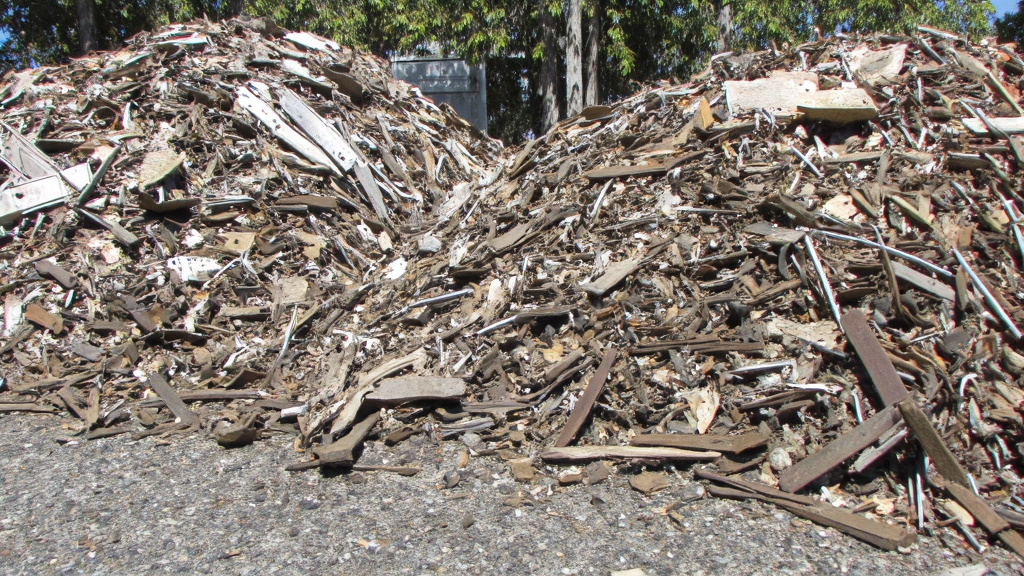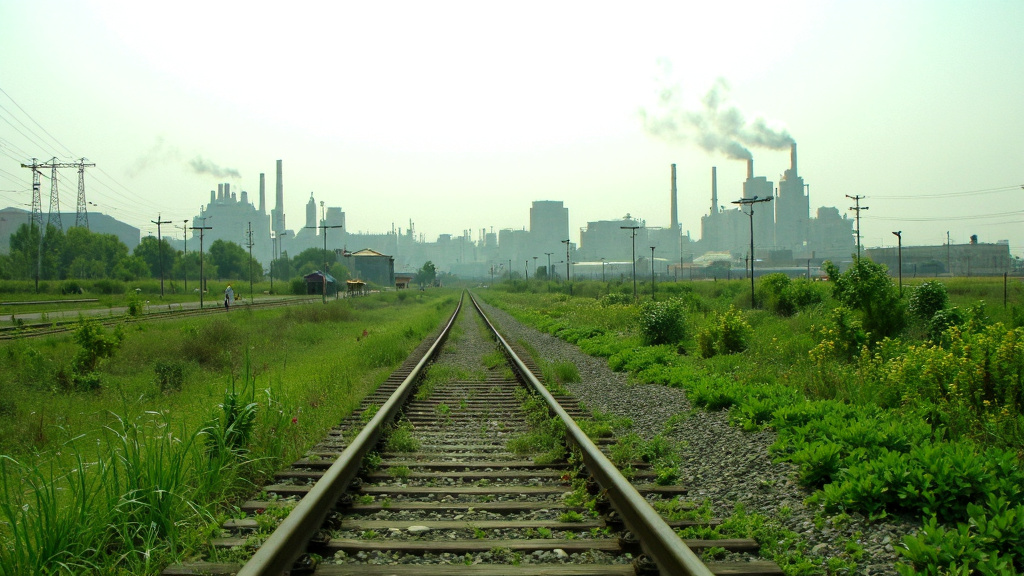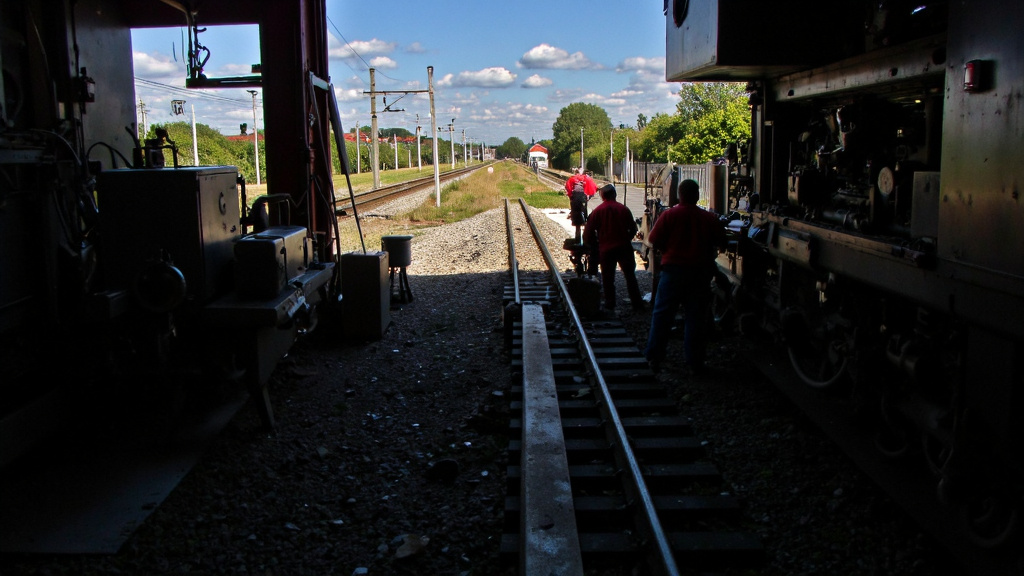5901 Botham Jean Blvd, Dallas, TX 75215
The Rise of Sustainable Railroad Recycling Practices
May 7, 2025Replacing every mile of railroad track generates approximately 400 tons of recyclable steel. The rail industry, traditionally known for connecting people and goods, is now leading in sustainable material management. Railroad systems worldwide are adopting innovative recycling practices to transform their operational footprint.
Sustainable railroad recycling is crucial as aging infrastructure requires replacement and modernization. These practices go beyond simple metal recovery, involving comprehensive strategies to reduce waste, conserve resources, and minimize the environmental impact of this vital transportation network.
The industry’s shift toward a circular economy model marks a significant evolution in railroad maintenance and decommissioning. By recovering valuable materials like steel, iron, and copper from obsolete infrastructure, rail companies are reducing landfill waste and creating economic opportunities. This approach to material recovery is reshaping our view of railroad sustainability in the 21st century.
What Materials Can Be Recycled from Railroad Infrastructure?

Railroad infrastructure contains numerous valuable components that can be efficiently recycled. Each element represents a significant opportunity for material recovery and environmental preservation. The recycling potential extends beyond mere waste reduction to actual resource conservation.
Steel Rails and Metal Components
Steel rails form the backbone of railway systems and offer excellent recycling value. These high-grade steel components maintain their structural properties through multiple recycling cycles. The fastening systems, including spikes, tie plates, and rail anchors, add to the recyclable metal inventory.
A single mile of railroad track can yield approximately 90 tons of recyclable steel, creating substantial environmental benefits through reduced mining and manufacturing impacts. At Fort McCoy in Wisconsin, a recycling initiative successfully recovered about 400 tons of scrap iron from decommissioned railroad materials.
Railroad Ties/Sleepers
Wooden railroad ties have traditionally presented disposal challenges due to treatment chemicals. Modern recycling processes can now safely repurpose these materials for landscape timbers, retaining walls, and mulch products. The treated wood undergoes specialized processing to neutralize harmful compounds.
Concrete sleepers offer even greater recycling potential as they can be crushed and used as aggregate in new construction projects. Composite sleepers, made from recycled plastics and rubber, represent a sustainable alternative gaining popularity in the industry.
Ballast and Substructure Materials
The crushed stone ballast supporting tracks can be recovered, cleaned, and reused in several applications. When removed during track maintenance, this material serves perfectly in road construction, drainage projects, and landscaping. The durability of ballast stone makes it suitable for multiple life cycles.
- Primary recyclable components:
- Steel rails and fastening systems (spikes, plates, anchors)
- Wooden, concrete, and composite sleepers/ties
- Stone ballast and subgrade materials
- Copper wiring from signaling systems
- Overhead catenary components
Recent advancements in railroad materials management include the integration of other waste streams into railroad infrastructure. Research shows promising results from incorporating demolition waste, recycled glass, fly ash, waste rubber tires, coal wash, and steel furnace slag into railroad substructures. This approach not only diverts waste from landfills but also reduces the energy footprint of new construction.
For comprehensive recovery of these materials, specialized equipment and expertise are required to ensure proper handling and maximum recovery value. The economic benefits of railroad material recycling can offset decommissioning costs while supporting sustainability goals.
| Material | Recyclable Components | Common Applications |
|---|---|---|
| Steel Rails | Spikes, Tie Plates, Rail Anchors | New Rail Tracks, Construction Materials |
| Wooden Sleepers | Untreated Wood | Landscape Timbers, Mulch Products |
| Concrete Sleepers | Crushed Concrete | Aggregate in New Construction |
| Composite Sleepers | Recycled Plastics and Rubber | Railroad Infrastructure |
| Ballast | Cleaned Crushed Stone | Road Construction, Drainage Projects |
| Copper Wiring | Copper | Electrical Systems, New Wiring |
| Overhead Catenary Components | Metal Parts | New Catenary Systems |
What Are the Environmental Benefits of Railroad Recycling?

Sustainable railroad recycling offers significant environmental benefits. Recycling metal components from old infrastructure reduces landfill waste, ensuring valuable resources remain in use instead of becoming environmental burdens.
Carbon reduction is a key benefit of railroad recycling. The process emits far fewer greenhouse gases than producing new metals from raw ore. TiEnergy LLC reported saving 1.6 million pounds of carbon in 2023 through its environmentally friendly disposal methods for railroad ties, with each tie contributing approximately 3.06 pounds of carbon savings.
Resource conservation is another crucial advantage. Steel from decommissioned rail components reduces the need for new material extraction. For instance, a single locomotive contains enough steel to manufacture over 100 cars, conserving natural resources and preserving landscapes from mining impacts.
Energy efficiency also improves with railroad recycling. Recycling existing metal requires much less energy than extracting and refining new materials, reducing the overall environmental impact.
Railroad tie recycling offers specific benefits beyond metal recovery. Traditional disposal methods for creosote-treated ties can contaminate soil and water. Proper recycling prevents these effects and transforms waste into useful products. Companies like TiEnergy convert old ties into TIEROC, an engineered construction aggregate substitute, reducing the need for more carbon-intensive materials like rock and stone.
The circular economy benefits extend beyond immediate recycling. Sustainable recycling practices position railroads at the center of resource reuse systems, creating a ripple effect of environmental advantages as materials flow through multiple lifecycles.
Comprehensive Environmental Impact
Railroad recycling supports broader environmental protection efforts. Reducing mining activities preserves natural habitats and ecosystems, with less demand for virgin materials leading to fewer extraction sites and associated disturbances.
Proper railroad recycling protects water resources by reducing the risk of harmful chemicals leaching into groundwater, safeguarding human water supplies and aquatic ecosystems.
Recycling also reduces fire risks. Old ties in storage pose fire hazards, but recycling eliminates these risks and their potential for air pollution and landscape damage.
Environmental benefits also create economic opportunities. Markets for recycled railroad materials are expanding as more industries recognize their value, strengthening the sustainability and viability of recycling programs.
Through responsible recycling programs, the railroad industry demonstrates environmental leadership while addressing waste management challenges. These comprehensive benefits make railroad recycling essential for sustainable transportation infrastructure management.
| Activity | Carbon Emissions Savings |
| Recycling Railroad Ties | 1.6 million pounds of carbon saved in 2023 |
| Recycling 1 Railroad Tie | 3.06 pounds of CO2 saved per tie |
| Recycling 1 km of Railway Track Ballast | 52,211 kg CO2e saved |
Conclusion: The Future of Sustainable Railroad Recycling

The railroad industry leads in industrial sustainability through innovative recycling practices. By recovering valuable materials from locomotives and train equipment, the sector makes significant strides in resource conservation and pollution reduction. The average locomotive contains about 100 tons of recyclable steel, which when processed can reduce the need for new raw materials by up to 90% while cutting CO2 emissions by as much as 58%.
As technology advances, more transformative approaches to railroad recycling are expected. From bio-recycling techniques using specialized bacteria to locomotives designed with end-of-life recycling in mind, the future holds great potential for further reducing the environmental impact of rail transport. The industry’s embrace of circular economy principles—where materials are continuously reused and repurposed rather than discarded—sets a powerful example for other sectors to follow.
For organizations looking to implement similar sustainable practices in their own operations, contact Okon Recycling at 214-717-4083.
